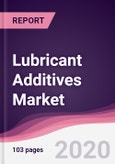What is Lubricating Additives?
Lubricants are used in various applications in order to reduce friction usually made of solid particles and also defend against corrosion by protecting the surfaces from the outbreak of substances which are chemically active, by forming a corrosion resistant layer. These lubricants are used in many industries such as automotive, energy, industrial, marine and so on.
Lubricant additives in other word also known as also known as oil additives, is used to enhance the property of base oil. Additive consist of 0.1 to 30% of the overall lubricant oil depending on the application. Lubricant additives are used in heavy duty motor oils as well as passenger car motor oils.
What are the major applications of Lubricating Additives?
The various end users assessed include Automotive, Industrial and Others and others
Market Research and Market Trends of Lubricating Additives
- Base stock developments influence additive and blending technologies
In order to obtain a perfect lubricant formulation, blending the right base stock with right additives is required. Additionally. A small change in base stock will affect the behavior of additives used in a lubricant formulation and it may not perform as expected. Therefore, to overcome this issues, the lubricant industry tackles these concerns by continually developing new additives and redefining blending strategies by blending different types of base oils.
- Demand shifts from group I to groups II/III
Group I base oils are widely used in industrial applications. However, these base oils cannot be used in most lubricants designed for modern passenger-car and diesel-truck applications. Those applications now generally require formulations using Group II or III base stocks. Therefore, the introduction of the higher quality, better performing Group II and Group III base oils created a trend in the lubricating additives market. Furthermore, technological changes in the automotive industry specifically, engine oil requirements also contributed for the growth of lubricating additives.
- Trend towards alternate fuels
Usage of biomass derived fuels is gaining momentum in the current market situations. Government initiations to decrease price is on the other hand increasing the demand for use of ethanol particularly in North American Countries. Moreover, E85 has been gaining more momentum in the recent years.
Who are the Major Players in Lubricating Additives Market?
The companies referred in the market research report include the The Lubrizol Corporation, Chevron Oronite Company LLC, Infineum and others
What is our report scope?
The report incorporates in-depth assessment of the competitive landscape, product market sizing, product benchmarking, market trends, product developments, financial analysis, strategic analysis and so on to gauge the impact forces and potential opportunities of the market. Apart from this the report also includes a study of major developments in the market such as product launches, agreements, acquisitions, collaborations, mergers and so on to comprehend the prevailing market dynamics at present and its impact during the forecast period 2020-2025.
Key Takeaways from this Report
- Evaluate market potential through analyzing growth rates (CAGR %), Volume (Units) and Value ($M) data given at country level – for product types, end use applications and by different industry verticals.
- Understand the different dynamics influencing the market – key driving factors, challenges and hidden opportunities.
- Get in-depth insights on your competitor performance – market shares, strategies, financial benchmarking, product benchmarking, SWOT and more.
- Analyze the sales and distribution channels across key geographies to improve top-line revenues.
- Understand the industry supply chain with a deep-dive on the value augmentation at each step, in order to optimize value and bring efficiencies in your processes.
- Get a quick outlook on the market entropy – M&A’s, deals, partnerships, product launches of all key players for the past 4 years.
- Evaluate the supply-demand gaps, import-export statistics and regulatory landscape for more than top 20 countries globally for the market.
Table of Contents
Methodology

LOADING...








